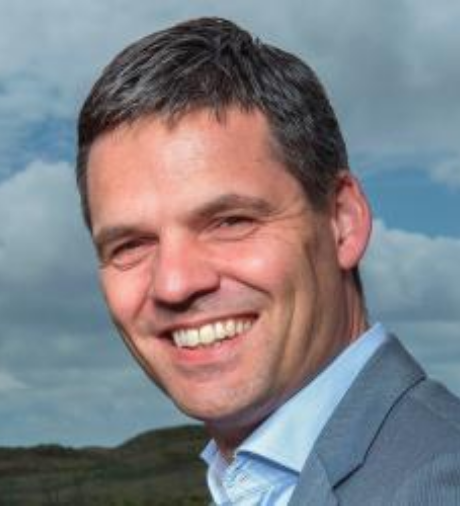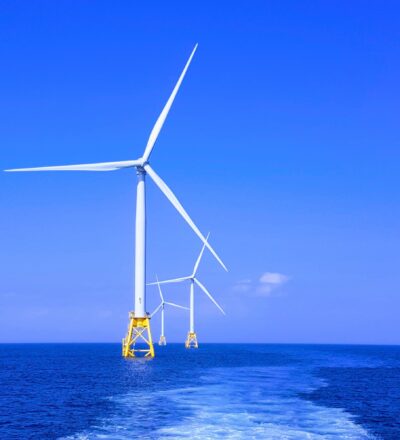Electrification in industry, or the transition from fossil to renewable electrical energy and the elimination of CO2 emissions: it is easier said than done. The electrification roadmap is a good first step, sustainable hydrogen one of the possible routes. But above all, it is important that the entire value chain works together.

The industry and the sector for renewable energy really need to find each other in the future.
Rob Kreiter, TKI Energy & Industry
During the European Industry & Energy Summit 2020, TKI Energy & Industry Director Rob Kreiter introduced the roadmap for electrification in industry: ‘The industry and the sector for renewable energy really need to find each other in the future. Both parties would like to know which steps and preconditions are required for this. To this end, we are developing the electrification roadmap. ‘Industry and the renewable energy sector are at the heart of the roadmap, but there are also important roles for the government and infrastructure companies’. The roadmap offers five different perspectives on electrification: technological, economic, commercial, organizational and public. Kreiter: ‘For each of the five areas, the roadmap shows who should take which steps at what time, and which technologies will be available at what time at scale.’
Electrification to achieve climate goals
Various parties consider the roadmap as a valuable way of accelerating electrification of industry. For example, David Pappie, Director of Top Sector & Industrial Policy of the Dutch Ministry of Economic Affairs and Climate, described it as crucial that there is a good and realistic picture of the supply and demand for sustainable energy in the future: ‘This way companies can now make the right choices about what kind of technologies they invest. ‘And that’s important, agreed Alice Krek of Deltalinqs, the company that represents the interests of 95% of the logistics, port and industrial companies in Mainport Rotterdam:’ Without electrification it will be difficult to achieve the climate goals.’

Without electrification it will be difficult to achieve the climate goals
Alice Krekt, Deltalinqs
Steven Engels, general director Benelux of the energy company Ørsted, immediately indicated where he thinks the problem lies: ‘The biggest challenge for electrification is a chicken and egg problem: the offshore wind industry says that there is no demand for sustainable electricity, while the industry says that there is no offer to realize electrification. According to TKI director Kreiter, cooperation in the entire value chain is therefore the keyword in accelerating electrification: ‘Industry and the renewable energy sector need security. That is why they need to get to know each other’s world and learn to speak each other’s language. TKI Energy & Industry (E&I) is convinced that the potential of electrification is greater than it is now emerging, and therefore wants to bring the two worlds together through the roadmap.’ TKI E&I is doing this together with DNV GL and TNO, who map out the exact potential of electrification for Dutch industry.
‘We must act together’
That joint action of sectors is crucial was also evident in the panel discussion with Kreiter, Groningen Seaports CEO Cas König, Eveline Otten of the Energy Transition Team of Shell Netherlands and Director of Public Affairs of Eneco Ron Wit. Shell and Eneco recognize the potential of electrification and are actively looking for ways to achieve that goal. According to König, it is important not to wait for each other: ‘We really have to take joint action now and make the full choice for electrification. In our port we invest millions in infrastructure for green hydrogen and biochemistry. Companies will automatically follow. ‘
Hydrohub Innovation Platform
A concrete example of a green route that emerged in the session is the Hydrohub Innovation Program of the Institute for Sustainable Process Technology. Program manager Carol Xiao explains that the ISPT tries to bring industry clusters and stakeholders together: ‘You first have to understand each other before you look for your own interests.’ For example, ISPT is working on sustainable green hydrogen on a gigawatt scale for use in industry. The hydrogen is generated by electrolysis at costs comparable to fossil hydrogen. Xiao: ‘The roadmap helps us to see what steps are needed for this. I am confident that we will be able to solve the technological challenges of green hydrogen and that in the coming years large plants for electrolysis will arise, including infrastructure to get the energy to industry. ‘

I am confident that we will be able to solve the technological challenges of green hydrogen and that in the coming years large plants for electrolysis will arise, including infrastructure to get the energy to industry.
Carol Xiao, ISPT
Accept trial and error
Marieke Visser of Wind Meets Industry and Afkenel Schipstra of energy company Engie also consider cooperation to be of decisive importance in closing the gap between industry and the sustainable energy sector. The panel discussion they had with Xiao also revealed that it is time for action. Schipstra: ‘We need a vision and a strategy, but also someone who says: come on, let’s really do it. Otherwise, it will remain merely a vision.’ Visser also addressed the idea that we have a chicken and egg problem: ‘We should no longer be paralyzed by the chicken and egg idea, but instead breaking out of it. It is time for innovation, which also includes trial and error. We have to accept that.’
In his closing words about the session, Rob Kreiter broadly agreed with Visser’s words: ‘We may have a chicken and egg problem, but sufficient solutions have also been discussed. Many parties are already doing what they have to do, now it is important to initiate the electrification of the industry on the basis of trust from the value chain as a whole. As soon as someone takes the first step, it will create more confidence and more steps from others will follow. The roadmap is a good starting point, but it will not be the end of the electrification process.’
You can watch the entire broadcast here.
